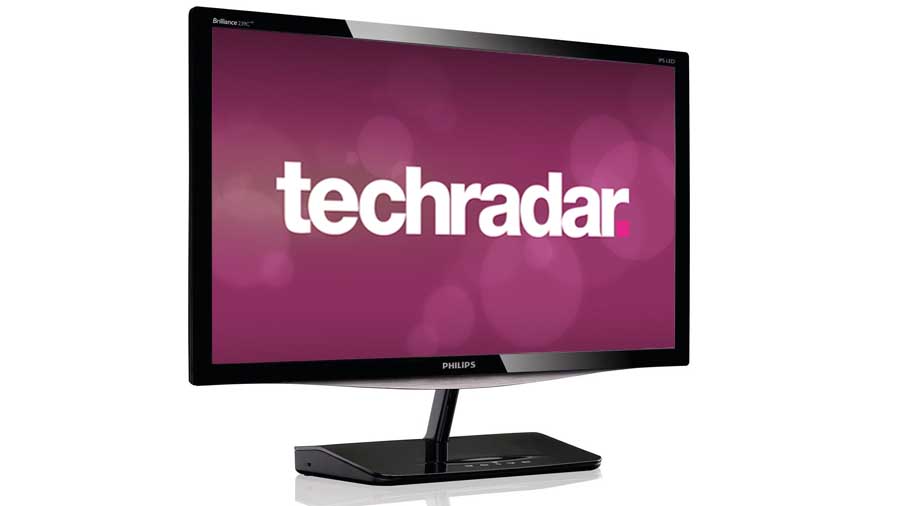TechRadar Verdict
Pros
- +
IPS screen
- +
Slick looks
- +
Affordable
- +
Consistent LED backlight
Cons
- -
Limited adjustability
- -
Black levels aren't the best
- -
Harsh banding
- -
No DVI connectivity
Why you can trust TechRadar
Thanks to Apple's iPad and iPhone, IPS screen technology has hit critical mass. The latest PC monitor to get in on the IPS game is the new Philips Brilliance Blade 2, a 23-inch model with Full HD 1080p resolution.
As little as a year ago, any LCD screen with IPS panel technology cost a pretty penny. Today, prices have tumbled to as little as £130. It's a dramatic turn around and an awfully welcome one, to boot.
Previously, affordable monitors packed TN panels. They're quick in terms of response times, but otherwise off the pace by pretty much every conceivable metric. By comparison, IPS panels have better colours, viewing angles, contrast, the works.
But if you can be pretty confident that the Philips Brilliance Blade 2 has the measure of almost any TN monitor, how does it stack up against the brave new 23-inch IPS generation? We're thinking here about screens such as the AOC i2352vh, which represents the starting point for IPS panels, or the ViewSonic VP2365-LED and its fancier feature set, among others.
Priced at around £170, the Philips Blade 2 is bang in the most competitive part of the computer monitor market. Luckily, it's one of slickest-looking screens we've ever seen.
Philips Brilliance Blade 2 at a glance
Size: 23-inch
Panel type: IPS LCD
Backlight: LED
Resolution: 1,920 x 1,080
The overall design vibe is very much mini HD TV. First, there's the super-slim glossy bezel and the equally skinny but effortlessly elegant arm that suspends the panel. Then there's the base module with integrated soft-touch controls and video inputs, including a pair of HDMI ports and a VGA socket.
Put simply, it looks expensive and it feels great. The only downside is the limited adjustability. Tilt tweaking is all you get. Still, fire her up and you'll soon forget that limitation. It's immediately obvious that you're looking at premium panel technology.
In fact, first impressions are almost identical to the rest of the 23-inch IPS gang - very likely because it shares a panel with most, if not all, of them.
Performance
Whatever the reason, the colours are just plain gorgeous - detailed and rich without being over saturated. The same goes for the smooth, even anti-glare coating. IPS panels used to be conspicuous by their rather grainy, sparkly anti-glare coatings. But not here.
Kudos also goes to Philips for configuring the Blade 2 with a decently powerful LED backlight. That's not always the case with LED tech, which can be a bit dingy. Most of the time, the extra power is irrelevant, as the Blade 2 goes well beyond the recommended 200cd/m2 brightness level. But occasionally, it's handy to be able to turn up the heat.
The pixel response is nippy enough, too, even at default settings. You can also ramp up the response rates via the SmartResponse feature, the snag being that overdriven pixels can occasionally produce some subtle but weird visual side effects. We'd leave the SmartRespone box unticked.
The Philips Blade 2, however, is not perfect. Subjectively, the black levels and outright contrast aren't quite as impressive as the competition. Working in Windows, it's not overly obvious. But when watching video content, particularly at night, there's a little too much light escaping from black tones.
In theory, the SmartContrast feature should help here. But like every other dynamic contrast implementation, it's no substitute for a panel with good inherent contrast. That said, there's absolutely no edge bleed. The backlighting is extremely consistent.
Our suite of test images also reveal a few image quality niggles. The white and black scales are pretty much impeccable, which is great. The viewing angles are beyond reasonable reproach, too. But there's a problem with gradient rendering. It's spoiled by pretty harsh banding.
It's not what we're used to seeing with IPS panels, thanks to their colour fidelity, and it betrays that this is very likely a 6-bit, rather than 8-bit, panel. Again, for most users most of the time, it's a non issue. But it does mean the Philips Blade 2 isn't a great candidate for graphics professionals looking for something usable on the cheap.
Lastly, the lack of DVI connectivity is a little unfortunate. You can use a DVI-to-HDMI converter if your PC lacks an HDMI port, of course, which can be bought for about a fiver. That works fine with most graphics adaptors. However, ATI/AMD graphics cards can be tricky to set up correctly. You have been warned.
Verdict
Seriously slick looks and IPS panel tech is a great combo. But the Philips Blade 2 has a few too many image quality flaws.
The TechRadar hive mind. The Megazord. The Voltron. When our powers combine, we become 'TECHRADAR STAFF'. You'll usually see this author name when the entire team has collaborated on a project or an article, whether that's a run-down ranking of our favorite Marvel films, or a round-up of all the coolest things we've collectively seen at annual tech shows like CES and MWC. We are one.
